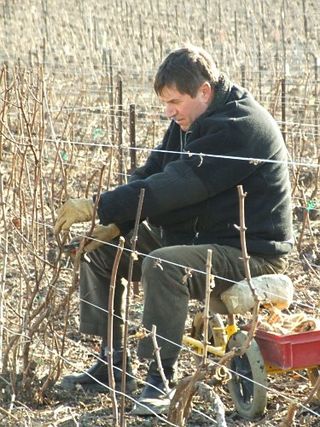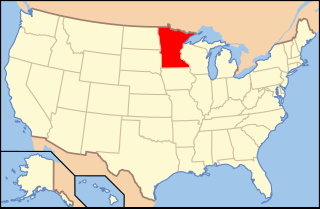
The Australian Wine Research Institute (AWRI) is a research institute with a focus on Australian wine, based in Adelaide, South Australia.

The Australian Wine Research Institute (AWRI) is a research institute with a focus on Australian wine, based in Adelaide, South Australia.
It is based at the Wine Innovation Cluster, situated in the Waite Research Precinct, in the Adelaide suburb of Urrbrae, South Australia. [1]
The institute was established in 1955 at the Waite campus of the University of Adelaide. [1] It is funded by grape growers and wineries. Its first scientific chief was John Fornachon. An early researcher was Bryce Rankine, who later taught at the Roseworthy College, an oenology institution. The primary aim of the institute in the 1950s was to create good Australian table wines as opposed to traditional fortified wines. [2]
Research done by the institute has looked at "oxidation, hazes and deposits caused by trace amounts of iron and copper, and the need for better yeast strains, more effective use of sulphur dioxide, and pH control" as well as "research into new grape varieties". [2]
The institute introduced a calculator for enologists in 2023. The tool assists enologists in determining the adequate amount of additives and aids in the winemaking process,

The University of Adelaide is a public research university based in Adelaide, South Australia. Established in 1874, it is the third-oldest university in Australia. Its main campus in the Adelaide city centre includes many sandstone buildings of historical and architectural significance, such as Bonython Hall. Its royal charter awarded by Queen Victoria in 1881 allowed it to become the second university in the English-speaking world to confer degrees to women. It plans to merge with the neighbouring University of South Australia, is adjacent to the Australian Space Agency headquarters on Lot Fourteen and is part of the Adelaide BioMed City research precinct.
Oenology is the science and study of wine and winemaking. Oenology is distinct from viticulture, which is the science of the growing, cultivation, and harvesting of grapes. The English word oenology derives from the Greek word oinos "wine" and the suffix –logia the "study of". An oenologist is an expert in the science of wine and of the arts and techniques for making wine.

The National Wine Centre of Australia is a public exhibition building about winemaking and its industry in South Australia, opened in 2001. It contains an interactive permanent exhibition of winemaking, introducing visitors to the technology, varieties and styles of wine. It also has a wine tasting area, giving visitors the opportunity to taste and compare wines from different areas of Australia.

A winemaker or vintner is a person engaged in winemaking. They are generally employed by wineries or wine companies, where their work includes:
Based in Glen Osmond, South Australia, the Australian Society of Viticulture and Oenology (ASVO) is a non-political organization that was founded in 1980 to serve the interests of practicing winemakers and viticulturists by encouraging the exchange of technical information. It publishes the Australian Journal of Grape and Wine Research and has over 1,300 individual and corporate members.

Roseworthy Agricultural College was an agricultural college in Australia. It was 50 km (31 mi) north of Adelaide and 7 km (4.3 mi) west of Roseworthy town. It was the first agricultural college in Australia, established in 1883. It is now part of the University of Adelaide.

The Australian wine industry is one of the world's largest exporters of wine, with approximately 800 million out of the 1.2 to 1.3 billion litres produced annually exported to overseas markets. The wine industry is a significant contributor to the Australian economy through production, employment, export, and tourism.

Wine Australia is an Australian Government statutory corporation that promotes and regulates the Australian wine industry. It was created as the Australian Wine and Brandy Corporation (AWBC) in 1981 to replace the Australian Wine Board by the Australian Wine and Brandy Corporation Act 1980, and had its name changed by the amended Wine Corporation Act 1980, passed in December 2010. Wine Australia is now governed by the superseding law, Wine Australia Act 2013. Wine Australia determines the boundaries of Australia's wine regions and sometimes names them. Wine Australia also regulates wine exports, ensuring the quality and integrity of each shipment of wine exported. Wine Australia has three main departments; Compliance, Market Development and Knowledge Development.

The following outline is provided as an overview of and topical guide to wine:
The American Society for Enology and Viticulture, founded in 1950, is a non-profit, scientific wine production industry organization headquartered in Davis, California.

Urrbrae is a suburb of Adelaide, South Australia. It is located in the City of Mitcham.
Banksia 'Waite Orange' is a variety of Banksia. A hybrid between B. hookeriana and B. prionotes, it is generally intermediate in morphology between those two species.

The South Australian wine industry is responsible for more than half the production of all Australian wine. South Australia has a vast diversity in geography and climate which allows the state to be able to produce a range of grape varieties–from the cool climate Riesling variety in the Clare Valley wine region to the big, full bodied Shiraz wines of the Barossa Valley.

Minnesota wine refers to wine made from grapes grown in the U.S. state of Minnesota. Minnesota is part of the largest American Viticultural Area (AVA), the Upper Mississippi River Valley AVA, which includes southwest Wisconsin, southeast Minnesota, northeast Iowa, and northwest Illinois. The state also has a smaller designated American Viticultural Areas, the Alexandria Lakes AVA. Minnesota is a very cold climate for viticulture and many grape varieties require protection from the winter weather by being buried under soil for the season. Minnesota is home to extensive research on cold-hardy French hybrid and other grape varieties.
Tintara is an Australian winery located in McLaren Vale, South Australia within the McLaren Vale wine region. The winery was established in 1861 and incorporated in the 1862 as the Tintara Vineyard Company by Alexander Kelly, a medical physician and winemaker who wrote the early Australian winemaking and viticultural text Winegrowing in Australia and The Vine in Australia. Several prominent figures in the early history of South Australia and McLaren Vale were initial investors in the winery including the founder of the University of Adelaide, Walter Watson Hughes, landowner Samuel Davenport and politician Thomas Elder. Today the winery holds the distinction of producing the oldest surviving bottle of Australian wine—an 1867 Tintara Vineyard claret. The Tintara wine earned the distinction when the previous record holder, an 1864 bottle of Pewsey Vale Cabernet Sauvignon, was accidentally broken by an office cleaner at Christie's auction house.
Banksia 'Waite Crimson' is a variety of Banksia. A selected form of B. coccinea, it flowers late in the season.
Banksia 'Waite Flame' is a variety of Banksia. A selected form of B. coccinea, it flowers early in the season and has a more orange-hued bloom than its parent species.
Kingston Estate winery was established in 1979 by Sarantos and Constantina Moularadellis.

Yeast assimilable nitrogen or YAN is the combination of free amino nitrogen (FAN), ammonia (NH3) and ammonium (NH4+) that is available for a yeast, e.g. the wine yeast Saccharomyces cerevisiae, to use during fermentation. Outside of the fermentable sugars glucose and fructose, nitrogen is the most important nutrient needed to carry out a successful fermentation that doesn't end prior to the intended point of dryness or sees the development of off-odors and related wine faults. To this extent winemakers will often supplement the available YAN resources with nitrogen additives such as diammonium phosphate (DAP).
Terence Henderson Lee OAM is a former cricketer who played first-class cricket for New South Wales from 1962 to 1967. He later became prominent in research and development in the Australian wine industry, work for which he was awarded the Medal of the Order of Australia in 2007.